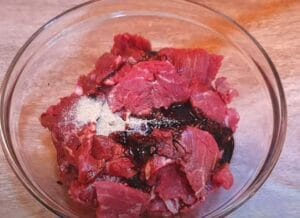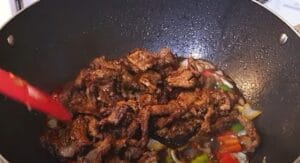Transport your dinner table to China with this rich, tasty beef with szechuan style recipe after James’ journey to capture the soul of the cuisine.
As I sit here on this cold winter day, my mind wanders to memories of warm, comforting meals. I think back to my recent trip to China and the incredible Szechuan beef I enjoyed at a small restaurant in Chengdu. The tender beef bathed in a mouthwatering brown sauce with hints of soy, garlic, ginger, and Szechuan peppercorns left my taste buds singing.
I’ve tried many times since returning home to recreate that beef Szechuan style, but each attempt has fallen short. The flavor never seems quite as rich, the beef not quite as succulent. But I remain undeterred in my quest to capture the magic of that dish. Which is why today, I’m excited to share a new Szechuan beef recipe with the readers of Food and Meal.
After much trial and error, I believe I’ve finally developed the technique to produce Szechuan beef with the same addictive flavor and melt-in-your-mouth texture as what I enjoyed overseas. The secret is in the velveting process – tossing the beef in a marinade of cornstarch, rice wine, and soy sauce before stir-frying. This protects the beef, keeping it tender while allowing it to soak up that iconic Szechuan sauce.
I can’t wait for you to give this recipe a try and let me know what you think. My hope is that with each bite, you’ll be transported back to that little restaurant in Chengdu alongside me, savoring the very best in Szechuan cuisine. Even on a cold winter day, this beef with szechuan style will warm your soul.
What is shredded beef szechuan style ?
Shredded beef with szechuan style style is a fiery and aromatic dish that involves thin strips of beef marinated in a blend of soy sauce, Shaoxing wine, cornstarch, and sometimes sesame oil. The key to this dish is the high-heat stir-fry technique, which sears the beef quickly, preserving its tenderness and allowing it to soak up the flavors of the marinade.
The cooking process is swift and requires precision. The beef is cooked in batches and set aside. Aromatics like garlic, ginger, and green onions are then stir-fried, followed by vegetables and the heat-bringing duo of dried chili peppers and Sichuan peppercorns. The sauce, typically a mix of chicken stock, soy sauce, sugar, and vinegar, is added to create a savory, sweet, and tangy flavor profile.
The emotional journey of preparing shredded beef Szechuan style is as intense as its flavors. It’s a culinary challenge that rewards with a complex and satisfying dish, offering a sense of accomplishment when the balance of spicy, savory, and numbing is just right. Sharing this dish can be a communal experience, uniting people through a love for bold Szechuan flavors.
Best Beef with szechuan style Recipes
Here is a classic and traditional Chinese New Year Cuisine – Szechuan Style Beef that you will want to serve every Chinese New Year. Serve this with a side of simple steamed rice for the tastiest results.
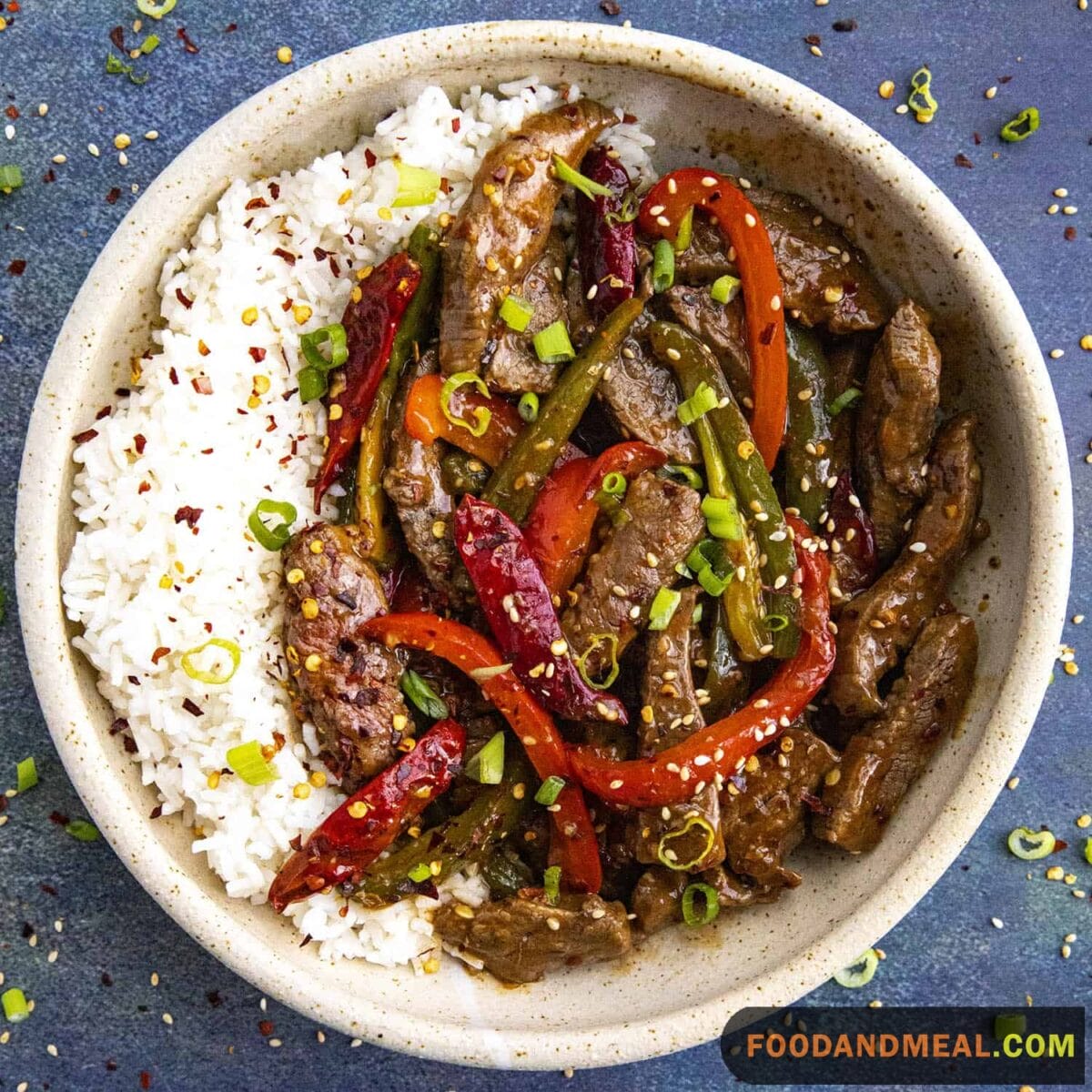
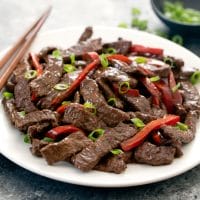
Szechuan Style Beef
Equipment
Ingredients
- 1 Pound Flank Steak Sliced Thinly •
- 1 Tablespoon Soy Sauce Your Favorite Kind •
- 1 teaspoon Wine Cooking Variety
- 2 teaspoons Cornstarch
- 4 tablespoons Oil Vegetable Variety
- 1 teaspoon Garlic Fresh and Thinly Sliced •
- 1 teaspoon Jalapeno Pepper Thinly Sliced
- 6 Pieces Green Onions Fresh and Cut into Sections
Ingredients For Your Sauce:
- ½ teaspoon Salt For Taste
- ½ teaspoon Sugar White in Color
- ¼ teaspoon Black Pepper For Taste
- ½ teaspoon Oil Sesame Variety
Instructions
- The first thing that you will want to do is mix together your sliced flank steak with your favorite kind of soy sauce, cooking wine and cornstarch in a medium sized bowl.

- Stir thoroughly to combine.

- Then heat up a large sized Wok set over medium heat. Add in your oil and once your oil is hot enough add in your garlic and jalapeno pepper slices.

- Cook for at least one minute before adding in your beef.

- Add in all of your ingredients for your sauce

- Cook for the next 2 minutes or until your beef is brown in color.

- Remove from heat and add in your green onions. Stir thoroughly to combine and serve whenever you are ready.

Video
Notes
Nutrition
© Food And Meal
This website provides approximate nutrition information for convenience and as a courtesy only. Nutrition data is gathered primarily from the Spoonacular Database, whenever available, or otherwise other online calculators.
How to make Szechuan Style Beef in the Oven
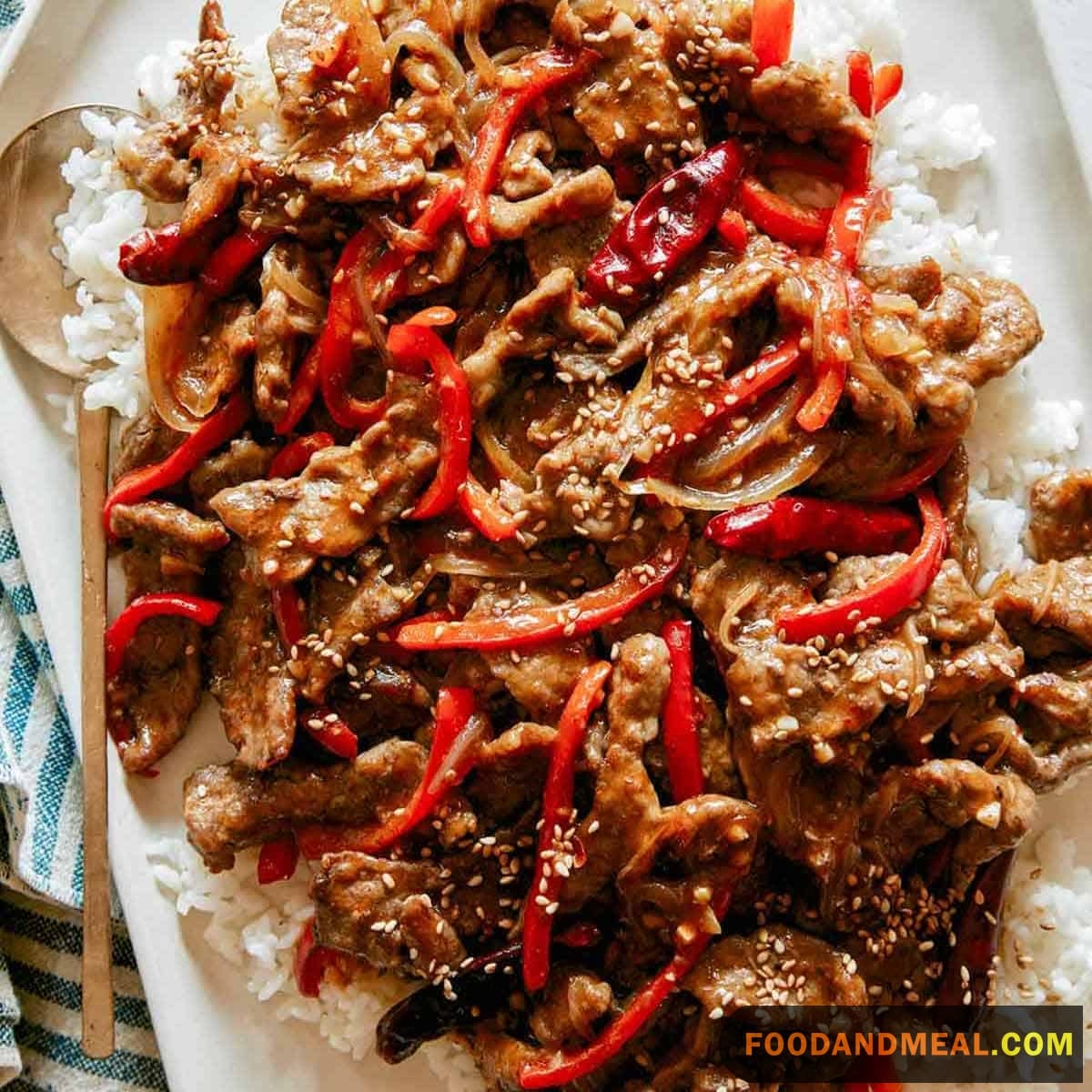
To cook the beef in the oven, preheat the oven to a high temperature – broiling would be ideal here. Spread the marinated beef in a single layer on a roasting tray lined with foil or parchment paper for easier cleanup. It’s essential not to overcrowd the pan to ensure each piece of beef gets a nice sear.
Broil the beef, watching it closely to prevent burning. The high heat will caramelize the edges of the beef, providing a delightful contrast to the juicy interior. This process should take only a few minutes on each side.
While the beef is cooking, you can stir-fry your vegetables on the stove. Traditional choices might include bell peppers, onions, and dried chilies for extra heat. Once the beef is done, toss it with the vegetables and pour the Szechuan sauce over the mixture, allowing everything to come together.
The result should be a dish that is wonderfully aromatic and bursting with layers of flavor – the heat from the chilies, the numbing quality of the Sichuan peppercorns, the richness of the beef, and the freshness of the vegetables. The textures, too, play a role in the enjoyment; the tender chew of the beef contrasts with the crispness of the veggies.
Serve the Szechuan beef over a bed of white rice or noodles to complement the intense flavors and provide a neutral base to soak up the delicious sauce. Garnish with green onions or sesame seeds for an additional pop of color and texture.
Szechuan beef vs general tso
Szechuan beef, as previously discussed, is a dish that celebrates the hallmark flavors of Sichuan cuisine—garlic, chili peppers, and the unique numbing sensation of Sichuan peppercorns. It is typically made with thinly sliced or shredded beef that has been marinated and stir-fried at high heat. The dish is known for its bold spiciness and the complex layering of savory, sweet, and sour notes. Vegetables often play a supporting role, adding texture and color to the dish.
General Tso’s chicken, on the other hand, is named after a 19th-century Chinese military leader, General Tso Tsung-tang, although there is no clear historical connection between the general and the dish itself. This dish features chunks of chicken that are battered and deep-fried until crispy, then tossed in a sweet and slightly spicy sauce. The sauce typically includes ingredients like soy sauce, rice vinegar, sugar, garlic, ginger, and dried red chili peppers, which contribute to its tangy and sweet flavor profile. Unlike Szechuan beef, General Tso’s chicken does not usually include Sichuan peppercorns and therefore lacks the characteristic numbing sensation.
In terms of texture, Szechuan beef offers the tenderness of the beef contrasted with the crunch of the stir-fried vegetables, while General Tso’s chicken is known for its crispy exterior and juicy interior, coated in a sticky sauce.
Emotionally, these dishes evoke different responses. Szechuan beef, with its intense heat and numbing spice, can be thrilling for those who enjoy spicy food, providing a sense of adventure and satisfaction in each bite. The experience of eating General Tso’s chicken is often comforting, with the familiar flavors of sweet and sour combined with the pleasing crunch of the fried chicken.
Expert Tips for making beef with szechuan style
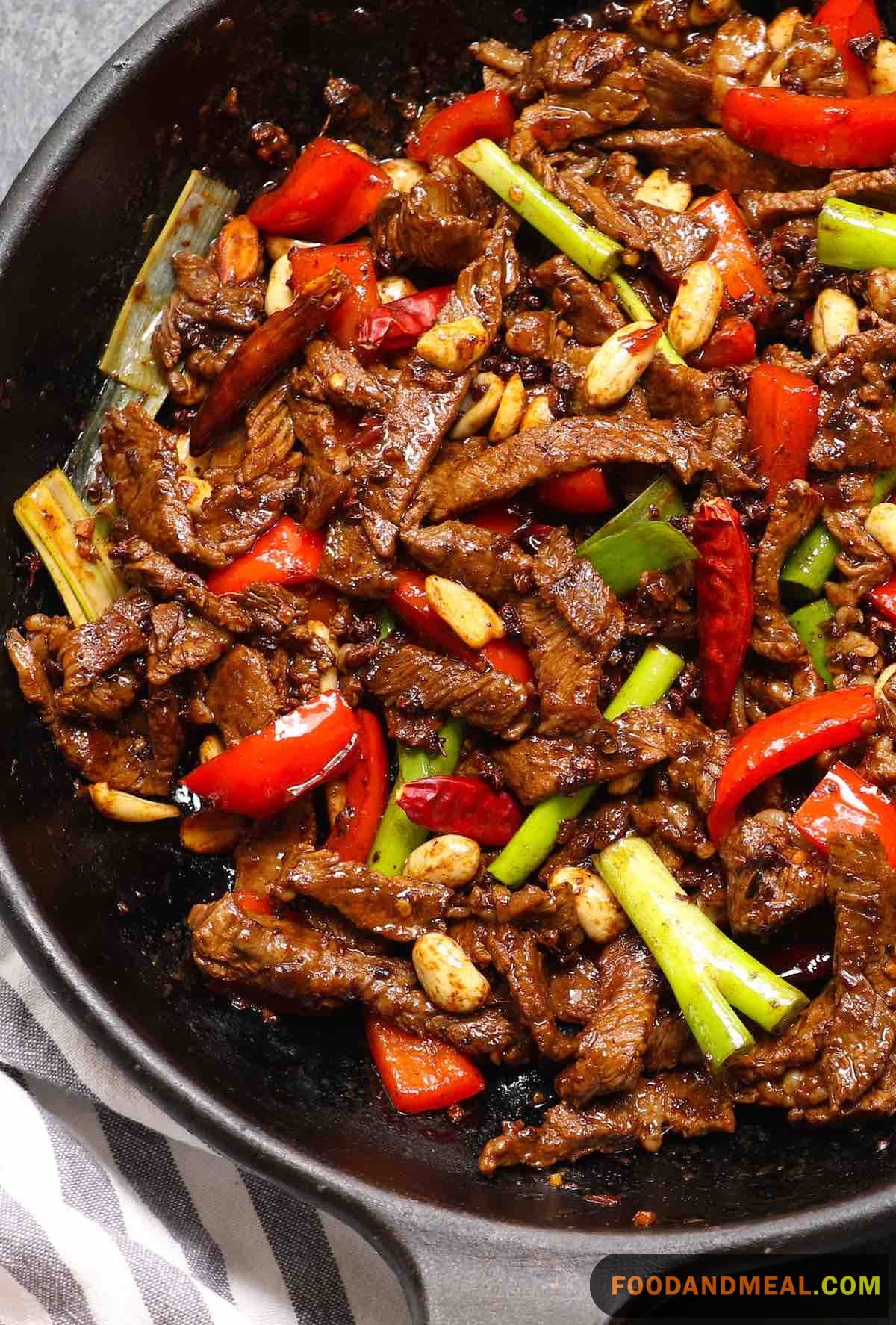
Cooking Notes
Szechuan, or Sichuan, cuisine is known for its bold flavors, particularly the pungent taste of garlic and chili peppers, as well as the unique flavor of Sichuan pepper. When preparing beef in the Szechuan style, it’s essential to consider the cut of meat, marinating process, balance of flavors, cooking technique, and final presentation.
For an optimal beef with szechuan style, using a tender cut like flank steak or sirloin is advisable because these cuts can be sliced thinly and cook quickly, retaining their tenderness. The beef should be sliced against the grain to ensure that each piece is as tender as possible.
Marinating the beef is crucial for infusing it with flavor. A typical Szechuan marinade might include soy sauce, Chinese cooking wine (Shaoxing wine), cornstarch, and a bit of oil. This not only seasons the meat but also helps to tenderize it and gives it a velvety texture when cooked. The cornstarch creates a barrier that keeps the meat juicy and helps thicken the sauce later on.
The balance of flavors in Szechuan cooking is complex. It often involves a combination of salty, sweet, sour, and umami tastes, complemented by the numbing spiciness of Sichuan peppercorns. The Sichuan peppercorn is unique; it produces a tingling sensation on the palate rather than outright heat. Balancing these flavors requires careful measurement and tasting during cooking.
When it comes to the actual cooking, high heat and speed are key. Stir-frying is a common method for Szechuan dishes, which involves cooking ingredients quickly in a very hot wok. This technique helps to retain the nutrients in the vegetables and ensures that the beef remains tender and flavorful. It’s important to have all ingredients prepped and ready to go before starting to cook since the process happens fast.
Finally, the dish is usually finished with additional ingredients such as garlic, ginger, green onions, dried chili peppers, and more Sichuan pepper. These are briefly stir-fried to release their aroma before the beef is added back into the wok. The result should be a harmonious dish with a rich, spicy, and slightly numbing sauce coating succulent slices of beef.
Serving Suggestions
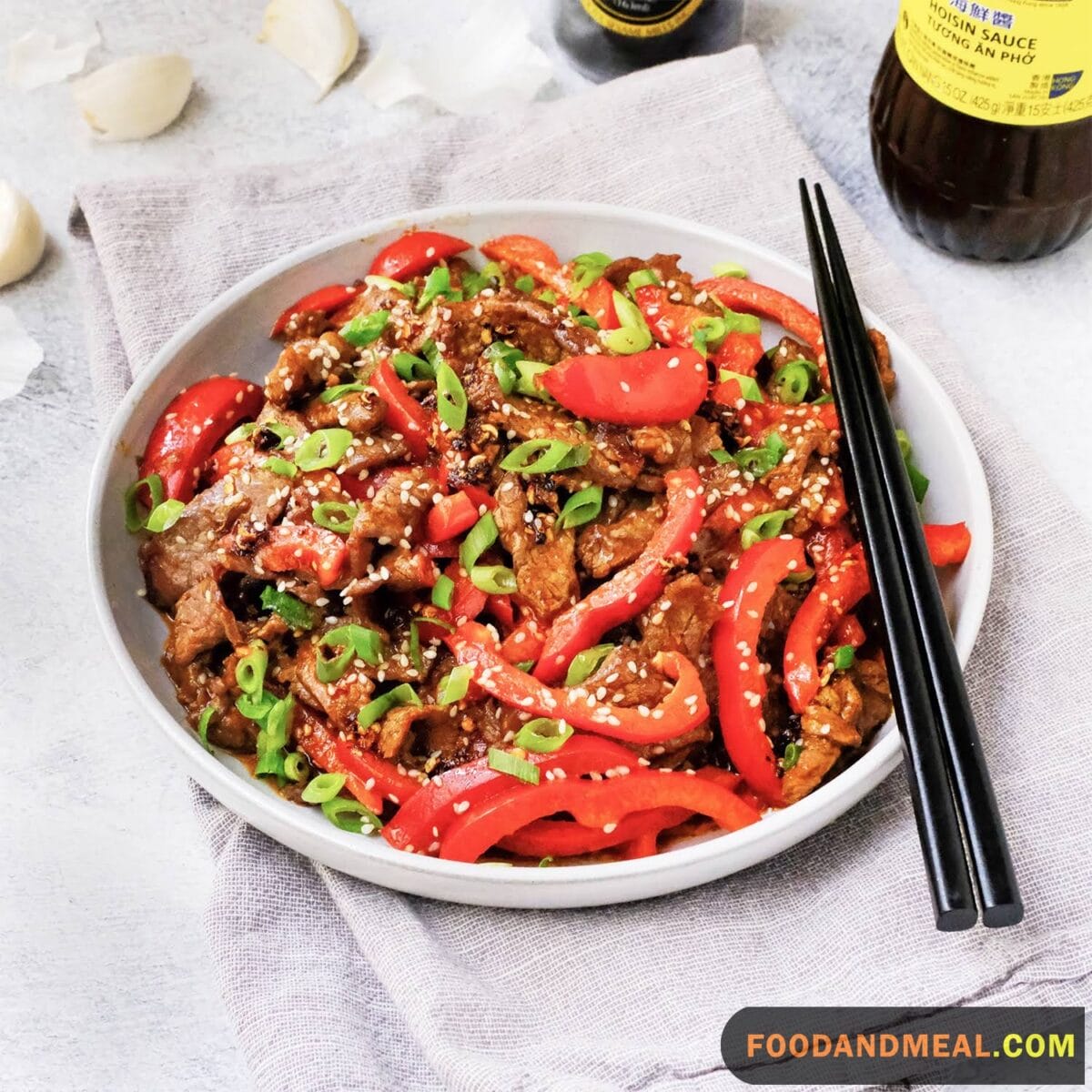
This Szechuan style beef pairs wonderfully with steamed white rice or lo mein noodles, which helps balance out the bold flavors. For vegetables, try bok choy, broccoli, or snap peas. I also like to add a simple cucumber salad on the side to provide a refreshing, crisp contrast.
Some other tasty items you can serve alongside include:
- Gyoza (Japanese pan-fried dumplings)
- Wasabi (Japanese horseradish)
- Karaage (Japanese fried chicken)
- Daifuku (Japanese mochi stuffed with sweet filling)
The complex, savory flavors of this Chinese-inspired dish also work nicely with something sweet afterward, like daifuku with red bean paste or fresh mango slices. I hope you’ll experiment with different combinations and find something you truly enjoy!
FAQs about making Szechuan Style Beef Stir Fry

What does Szechuan beef taste like?
Szechuan beef is known for its bold, spicy, and complex flavor profile. It typically has a combination of heat from red chili peppers, a numbing sensation from Szechuan peppercorns, and a savory umami taste from ingredients like soy sauce. The dish may also include garlic, ginger, and sometimes a hint of sweetness from sugar or hoisin sauce.
What is the difference between Hunan and Szechuan beef?
Hunan and Szechuan beef are both Chinese dishes, but they originate from different regions and have distinct flavor profiles. Szechuan beef is known for its bold spiciness, thanks to the use of Szechuan peppercorns and red chili peppers. It often has a numbing sensation from the peppercorns. On the other hand, Hunan beef is characterized by its intense heat, garlic, and a slightly sour or vinegary taste. While both dishes are spicy, the type and intensity of the spice differ.
What does Szechuan sauce taste like?
Szechuan sauce typically has a combination of flavors, including spiciness, sweetness, and tanginess. It often contains soy sauce, ginger, garlic, sugar, and chili peppers. The specific taste can vary depending on the recipe, but it generally has a savory, umami quality with a noticeable kick of heat.
What’s better, Mongolian beef or Szechuan beef?
The preference between Mongolian beef and Szechuan beef is subjective and depends on personal taste. Mongolian beef is known for its sweet and savory flavor, often featuring soy sauce, brown sugar, and garlic. Szechuan beef, as mentioned earlier, is spicy with a unique numbing sensation from Szechuan peppercorns. Both dishes are popular in Chinese cuisine, so the choice comes down to whether you prefer a sweeter flavor (Mongolian beef) or a spicier, more complex profile (Szechuan beef).
Additional FAQs:
- Can I make this dish less spicy? Yes, certainly. Adjust the amount of red pepper flakes or Szechuan peppercorns to suit your spice preference. You can start with less and add more as you go.
- How do I store leftovers? To store any leftover beef with szechuan style, place it in an airtight container and refrigerate. Reheat gently on the stovetop or in the microwave, but be cautious not to overcook the beef.
- Can I use a different protein? While beef is traditional, you can also prepare this dish with chicken, pork, or tofu if you prefer. Adjust cooking times as needed.
- What is the key ingredient in Szechuan cuisine? Szechuan cuisine is renowned for the unique flavor of Szechuan peppercorns, which have a numbing and citrusy taste. These peppercorns, along with chili peppers, are the foundation of Szechuan flavor.
- How can I make this dish gluten-free? You can make a gluten-free version of Szechuan Style Beef by using gluten-free soy sauce and ensuring that all the sauces and condiments you use are free from gluten. Check labels for any hidden sources of gluten.
Conclution
As I reflect on this beef with szechuan style journey, I’m grateful for the lessons learned. Though recreating that Chengdu restaurant dish proved difficult initially, the final result was worth every trial. This recipe captures the soul of Szechuan cuisine – the tantalizing interplay of sweet and spicy, the beef with a melt-in-your-mouth tenderness.
While the dish may seem complex, don’t let that deter you. With the right ingredients and a bit of patience as you velvet the beef and let flavors meld, you too can transport your dinner table to the heart of Sichuan province. I hope you’ll give this recipe a try soon. And if you have any tips for tweaking it even further, please share in the comments below!
To me, cooking has always been about more than just full bellies. Recipes like this Szechuan beef stir the memories and emotions tied to meals enjoyed in faraway lands. They build bridges across cultures one mouthwatering bite at a time. And isn’t that what food is ultimately all about? Bringing warmth, joy and connection to our lives.
I'm James F Anderson, a noted sous chef from London and a Le Cordon Bleu alumnus. My career began in a Michelin-starred Parisian eatery, where my blend of classic and contemporary cooking, using seasonal ingredients, earned accolades. Recognized in culinary publications and on cooking shows, I’m committed to mentoring aspiring chefs and delivering memorable dining experiences, marking me as a standout talent in the culinary world.



